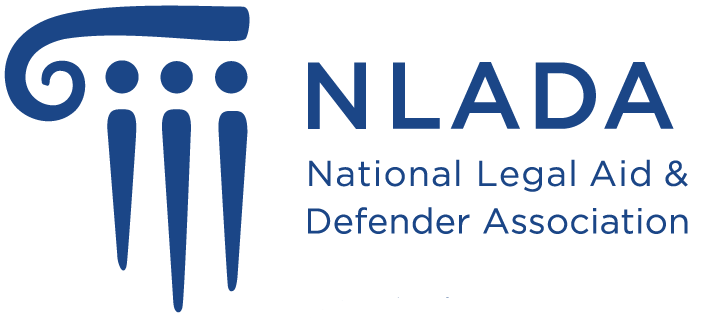Introduction
From 1974 to 1976, following consultations with the Attorney General and the Administrator of the Law Enforcement Assistance Administration, the National Legal Aid and Defender Association convened a 35-member National Study Commission on Defense Services, with LEAA grant support. The Commission's charter was to utilize the standards developed by the National Advisory Commission on Criminal Justice Standards and goals in 1973 as a "basic underpinning for an extensive study of defense services aimed at preparing a blueprint of guidelines and procedures which would meet the nation's indigent defense needs." The National Study Commission was divided into six topical Task Forces: 1) Scope of Services, Eligibility and Recoupment; 2) Workload, Manpower and Budget Projections; 3) Defender System Structure; 4) Internal Defender Office Structure; 5) Assigned Counsel System Structure; and 6) The Defense Attorney's Role in Diversion and Plea Bargaining. Following extensive study and the preparation of a Draft Report, a three-day National Colloquium on the Future of Defender Services was convened in 1976 in Washington, DC, to which were invited all state chief justices, state bar presidents, LEAA state planning agency executive directors, and defender program heads from around the country. The Colloquium produced some 60 commentaries upon the Draft Report, which was then further reviewed by the Commission and Colloquium participants. The black letter "Summary of Recommendations" printed here constitutes 20 pages of the Commission's 560-page Final Report, omitting extensive commentary and discussion.
The "black letter" text of these standards is available here for free. NLADA members have access to the full versions of standards, including commentary, related standards, and legal sources. Printed versions of standards are also available in our store.
More Indigent Defense Standards
I. Availability of Representation
Guideline 1.1 Nature of Cases and Proceedings for Which Counsel Should be Provided
Guideline 1.2 Time of Entry
Guideline 1.3 Procedures for Providing Early Representation: Program Responsibilities
Guideline 1.4 Procedures for Providing Early Representation: Law Enforcement Responsibilities
Guideline 1.5 Financial Eligibility Criteria
Guideline 1.6 Method of Determining Financial Eligibility
Guideline 1.7 Partial Eligibility
II. Structure of Systems for Defense of Eligible Persons
Guideline 2.1 Administrative Structures for Mixed Systems
Guideline 2.2 Allocation of Cases
Guideline 2.3 Ad Hoc Appointment of Counsel
Guideline 2.4 State Level Organization with Centralized Administration
Guideline 2.5 Preexisting Agencies in a State Defender System
Guideline 2.6 Private Defender Organizations
Guideline 2.7 Location of Defender Offices
Guideline 2.8 Regionalization of Defender Services
Guideline 2.9 Full-time Defenders and Minimum Staff Size
Guideline 2.10 The Defender Commission
Guideline 2.11 Functions of the Defender Commission
Guideline 2.12 Qualifications of the Defender Director and Conditions of Employment
Guideline 2.13 The Governing Body for Assigned Counsel Programs
Guideline 2.14 Qualifications, Conditions of Employment, and Role of the Administrator
Guideline 2.15 Establishing the Assigned Counsel Panel
Guideline 2.16 Assignment of Cases to Panel Members
Guideline 2.17 Sources of Funding for Defense Systems
Guideline 2.18 Administration of Defense System Funds
III. The Cost of Providing Counsel
Guideline 3.1 Assigned Counsel Fees and Supporting Services
Guideline 3.2 Defender System Salaries
Guideline 3.3 Projecting Defense System Personnel Needs
Guideline 3.4 Nonpersonnel Needs in Defender Offices
IV. Tailoring Specifications to Diverse Defender Programs
Guideline 4.1 Task Allocation in the Trial Function: Specialists and Supporting Services
Guideline 4.2 Task Allocation and Supporting Services in Rural Programs
Guideline 4.3 Relationship of Appellate and Trial Functions; Task Allocation
Guideline 4.4 Use of Law Students
Guideline 4.5 Prisoner Legal Assistance Programs
V. Core Questions Relating to Internal Operations
Guideline 5.1 Establishing Maximum Pending Workload Levels for Individual Attorneys
Guideline 5.2 Statistics and Record‑keeping
Guideline 5.3 Elimination of Excessive Caseloads
Guideline 5.4 Supervision and Evaluation of Defender System Personnel
Guideline 5.5 Monitoring and Evaluation of Assigned Counsel Program Personnel
Guideline 5.6 Accreditation and Specialization
Guideline 5.7 Training Staff Attorneys in a Defender System
Guideline 5.8 Training Assigned Counsel
Guideline 5.9 Recruitment, Hiring, Promotion and Removal of Defender Office Personnel
Guideline 5.10 Attorney, Client Relationships in a Defense System
Guideline 5.11 Continuity of Representation
Guideline 5.12 Choice of Counsel in Defense Systems
Guideline 5.13 Role in the Community and the Criminal Justice System

